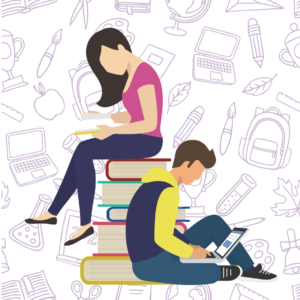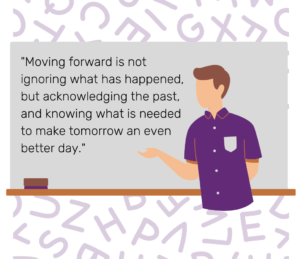Menu
Close
Establishing A Mentally Healthy Classroom
Oct 22, 2021
It’s never been more important to create a space for students to feel emotionally, mentally, and physically safe. As students continue in-person learning, teachers and staff will need to adjust their classrooms in ways that will positively impact the overall well-being of their students.
Additionally, and just as importantly, members of staff will also need to check in on themselves to make sure they are ready to work in-person again. Everyone has mental health that needs attending to no matter your occupation.
Here are just a few examples of how to implement easy exercises and mindful ways of thinking into the classroom.
Meditation

At the beginning of every class, give your students the opportunity to decompress with a two-minute mindfulness exercise. This allows everyone, including staff members in the classroom, to center themselves and focus on the lesson for the day. Although some might feel silly and uncomfortable, assure your students that starting off your class with this activity is a great way to clear racing thoughts and become present in the moment.
In these two minutes, your students can practice deep breathing, slowing down with calm music and clearing their heads by watching a guided meditation on YouTube—whatever works for you and your classroom.
Introducing meditative focused activities and techniques to youth has shown evidence of regulating emotions, reducing stress and anxiety and improved concentration and focus.
Creating A Survey

Coming back into the classroom is going to feel different for everyone, so how do you know everyone’s comfortability? How do you get the honest opinion of your students?
For some students, raising their hand and speaking to an entire classroom is anxiety-inducing because they feel like they might say the wrong answer and embarrass themselves in front of their peers. Especially talking about personal preferences, the majority of students might agree with the group vote even though they might feel a different way.
In order for that to not happen and make every student feel comfortable and accounted for, create an anonymous survey for each student to rate their comfortability from 1 – 5 about how they feel about certain activities in the classroom including group work, working in pairs, sharing school supplies, etc.
These surveys can soon become weekly check-ins with your students about how their feeling, how school is going, etc. Giving your students a chance to anonymously voice their opinion shows them that you care, and responding to their feedback shows that you’re listening.
Stop Generalizing
It’s hard to not generalize what everyone is thinking and feeling, especially taking everything that has happened into account. One student may feel extremely anxious about being in the classroom while another feels the complete opposite and is excited to be back.
Our YouthSMART Educator says avoiding generalizations will make each student feel valid in their own feelings and emotions.
“Often [youth] who aren’t nervous [about coming back to school] then feel like, ‘What’s wrong with me?’ ‘Why aren’t I feeling nervous?’ or they don’t feel that they have a voice to say, ‘Actually I’m fine.’ In some cases, a number of [youth] really did excel throughout COVID.”
No matter what, each student needs to know that whatever they are feeling is valid and that there is not a specific emotion that all students are supposed to feel. Assuming everyone’s mental health can actually do the opposite of what you’re trying to achieve.
Moving Forward

We all know ‘COVID-19’ and ‘pandemic’ are common buzzwords in our day-to-day lives.
Although still relevant and significant to talk about, it does not need to dominate all conversations.
Pandemic fatigue has become a type of exhaustion that we feel physically, emotionally and mentally while having to alter our lifestyles due to the impacts of COVID-19. Even though it’s a phenomenon, pandemic fatigue has the power to potentially turn into burnout if you’re not giving yourself proper care (taking breaks from media coverage, meditation, self-care, etc.)
Reflecting on the past is a necessary step to move forward. Especially with students, letting them know that moving forward is not ignoring what has happened, but acknowledging the past, and knowing what is needed to make tomorrow an even better day.
Although we are unable to host our annual Youth Summit this year, YouthSMART is now offering our popular menu of mental health learning sessions and engagement opportunities for all junior and senior high classes to select from. All sessions are age-appropriate, interactive, and flexible between virtual delivery and in-person facilitation. *In-person speakers will maintain all current Alberta Health orders.
To see our current offerings, please visit our Teacher Resources page on our YouthSMART website.
For more ways to engage your students, please find the following materials below:

You are not alone. There is help.
If you cannot find someone you trust who is willing to support you, dial a crisis line right away at 403-266-HELP (4357) All crisis lines are confidential.

YouthSMART would like to thank Sagium and Kinsted Wealth for being our 2020 – 2021 website sponsor.
